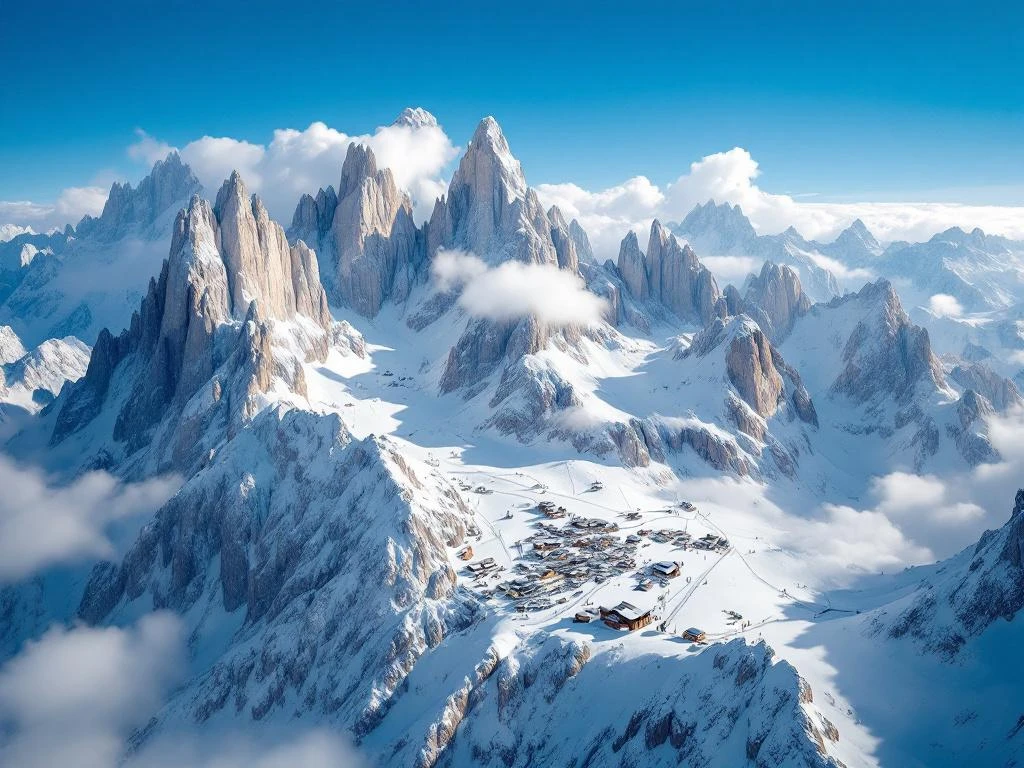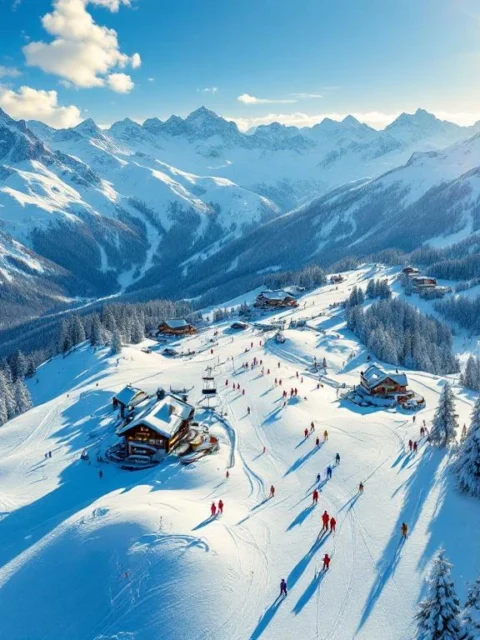What is the highest ski area in the Dolomites?

The highest ski resort in the Dolomites is the Marmolada glacier, which sits at an impressive altitude of 3,343 meters. This spectacular ski resort offers not only the highest slopes in the Dolomites but also breathtaking views over the iconic mountain peaks. The Marmolada is known as the “Queen of the Dolomites” and is an absolute must for any winter sports enthusiast seeking a unique alpine experience.
The Dolomites: Why This Mountain Range Is So Special for Winter Sports Enthusiasts
The Dolomites form a unique ski paradise that distinguishes itself from all other alpine destinations. This mountain range has received the prestigious UNESCO World Heritage status due to its spectacular rock formations and geological features.
What makes the Dolomites truly special is the fascinating mix of cultures. Here you experience both the Italian dolce vita and Austrian alpine traditions. This results in a unique ski culture where you can enjoy a perfect cappuccino on a sunny terrace in the afternoon while looking out over the characteristic light pink mountain peaks during the famous “enrosadira” – the moment when the mountains light up in the evening sun.
The combination of excellent slopes, modern lift systems, and warm Italian hospitality makes skiing in the Dolomites an unforgettable experience for winter sports enthusiasts of all levels.
What Is the Highest Ski Resort in the Dolomites?
The Marmolada glacier is definitively the highest ski resort in the Dolomites with a summit of 3,343 meters. This impressive ski resort is accessible via modern cable cars from Malga Ciapela and offers a unique glacier skiing experience.
The ski resort on the Marmolada features approximately 12 kilometers of slopes, including the famous Bellunese descent of no less than 12 kilometers long. Accessibility is excellently arranged with a modern gondola lift that takes you to the top in two stages.
What makes this highest Dolomites ski resort so special is not only the altitude but also the guaranteed snow reliability due to the glacier situation. Here you can often ski early in the season and until late spring while enjoying a 360-degree panorama over the entire Dolomites mountain range.
What Other High-Altitude Ski Resorts Can You Find in the Dolomites?
Besides the Marmolada, the Dolomites offer several other high-altitude slopes that are certainly worth visiting. Passo Pordoi reaches an altitude of 2,950 meters and is known for its challenging off-piste possibilities.
The Arabba ski resort climbs to 2,775 meters and forms an important part of the famous Sella Ronda ski route. Val di Fassa offers slopes up to 2,625 meters altitude and is known for its family-friendly atmosphere and excellent ski schools.
| Ski Resort | Maximum Altitude | Special Features |
|---|---|---|
| Marmolada | 3,343m | Glacier skiing, longest descent |
| Passo Pordoi | 2,950m | Off-piste paradise |
| Arabba | 2,775m | Sella Ronda access |
| Val di Fassa | 2,625m | Family-friendly |
Why Choose a High-Altitude Ski Resort in the Dolomites?
High-altitude Dolomites ski resorts offer better snow reliability and longer seasons than lower-altitude alternatives. At high altitude, snow remains powdery longer and conditions are often ideal for both beginners and advanced skiers.
The spectacular views from high-altitude slopes are incomparable. From the Marmolada glacier, you can see all the way to the Adriatic Sea on clear days. Moreover, high-altitude slopes are often less crowded, which means you have more space to enjoy your skiing technique.
Another advantage is the longer daylight hours at altitude. Due to the clear mountain air and snow reflection, you can optimally enjoy the sun here, even during the shorter winter days.
How Do You Prepare for Skiing in High-Altitude Dolomites Areas?
Preparation for Dolomites winter sports at high altitude begins with good physical condition. Start several weeks before your trip with cardio training and leg muscle strengthening to prepare your body for the more intensive strain.
Acclimatization is crucial at altitudes above 2,500 meters. Plan your first day calmly and drink extra water to prevent altitude sickness. Sun protection is essential, so don’t forget good sunglasses and sunscreen with high protection factor.
For your equipment: choose breathable layers that you can easily put on and take off. Weather can change quickly at high altitude. This is also the perfect time to consider ski lessons. We can help you find the right ski school that has experience teaching on high-altitude slopes.
What Makes the Dolomites Unique Compared to Other Alpine Ski Resorts?
The alpine ski resorts in Italy in the Dolomites distinguish themselves through their unique rock formations of dolomite stone. These light-colored, vertical rock walls create a dramatic landscape that you won’t find anywhere else in the Alps.
Culinarily, the Dolomites offer a perfect mix of Northern Italian, Austrian, and local Ladin influences. Think hearty goulash combined with perfect pasta, served in cozy mountain huts with panoramic views.
The cultural diversity is fascinating. In one day you hear Italian, German, and the local Ladin spoken. This mix of cultures creates a unique, hospitable atmosphere that you won’t easily encounter in other ski resorts.
Planning Your Perfect Ski Vacation in the Highest Dolomites Areas
For the best experience on the highest slopes, plan your visit between December and April. January and February offer the most snow reliability, while March and April are ideal for those who prefer sunnier conditions.
Choose accommodation in villages like Canazei for access to the Marmolada, or Arabba for central location in the Sella Ronda area. Book early for the best deals and availability.
We’re happy to help you find the perfect ski school and instructor for your level and wishes. With our extensive network of more than 250 ski schools, we can make the ideal match for your Dolomites adventure, so you can optimally enjoy this unique mountain world.


